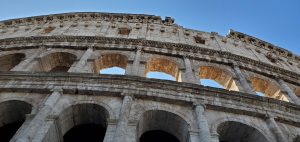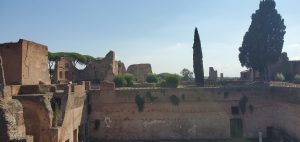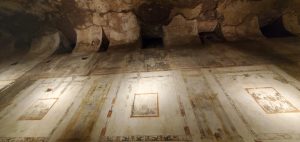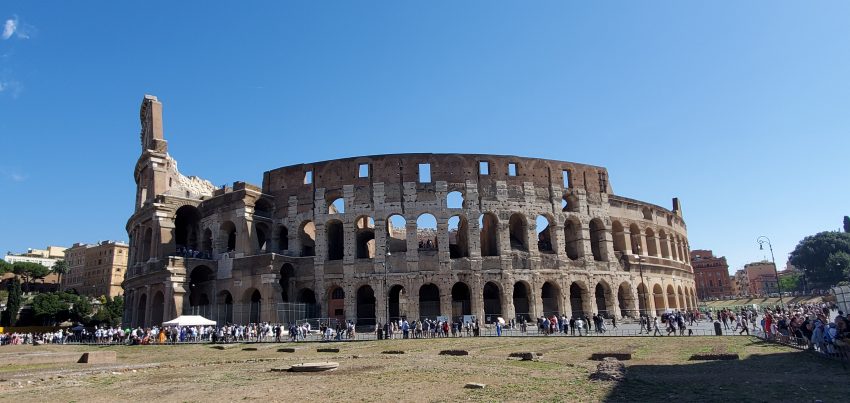Whether you have travelled to Rome yet or not you know that there are two major sites on everyone’s bucket list; the Colosseum and Vatican City. Despite the plethora of other amazing ancient and religious sites that can be found throughout the Eternal City, these two, for the most obvious reasons, should be first on your list. We will talk more about the Vatican next week, but this week we will discuss the ancient sites around and including the Colosseum.

On our very first trip to Rome we did a self guided tour through the Colosseum and the adjoining Roman Forum. I had done a fair amount of research, but it was useless to my interpretation and understanding of what I was seeing. When my son went two years later he took a guided tour, and what he reported back in no way represented what I had seen. I knew I needed to go back, and this time with a guide.
We booked two separate tours on the same day in order to cover the Colosseum, Roman Forum, Palatine Hill and Nero’s Golden Palace, which has just recently been opened to the public. Had time allowed we would also have visited the Capitoline Museum as it houses the relics from each of the above. There are a number of various tour operators, each with different levels of expertise and at different costs. Do your research and pick the one that appeals to you. 
The Colosseum is the largest ancient amphitheatre ever built, and is still the largest standing amphitheatre in the world, despite its age. Construction was completed in AD 80. The structure could hold an estimated 50,000 to 80,000 spectators at various points in its history, and was used for gladiatorial contests and public spectacles, executions, re-enactments of famous battles, and dramas based on Roman mythology. Our guide regaled us with tales of its history as we traversed the crowds to reach different perspectives and get the requisite number of photos. Although we knew much of the early history what has happened to the structure throughout time was just as interesting.
The nearby Roman Forum is a plaza surrounded by the ruins of several important ancient government buildings at the centre of the city of Rome. For centuries, the Forum was the centre of day-to-day life in Rome: elections, public speeches, criminal trials and the nucleus of commercial affairs. Statues and monuments commemorated the city’s leaders. We walked through the ruins while imagining what life would have been like at that time.

Behind that was Palatine Hill, one of the most ancient parts of the city, where imperial palaces were built starting from the time of Augustus. On site is a museum that features the relics uncovered from the site. The views from atop the centre most of the seven hills of Rome are breathtaking.
 These three sites were all part of a 4 hour walking tour, after which we joined a second tour to visit Nero’s Golden Palace. Inside the site it was an archeologist who guided us. The palace is located fully underground which explains why it was so hard to find. Recently (in archaeological terms) a portion of it has been excavated and opened to the public. The best part of the tour was a six minute virtual reality presentation that offered a glimpse into what the palace would have looked like when Nero occupied it, recreated from ancient writings.
These three sites were all part of a 4 hour walking tour, after which we joined a second tour to visit Nero’s Golden Palace. Inside the site it was an archeologist who guided us. The palace is located fully underground which explains why it was so hard to find. Recently (in archaeological terms) a portion of it has been excavated and opened to the public. The best part of the tour was a six minute virtual reality presentation that offered a glimpse into what the palace would have looked like when Nero occupied it, recreated from ancient writings.
These are perhaps the most iconic sites in all of Europe and a guided tour helps the thoughtful traveler to better understand the history of the social, political and cultural rise and fall of the Roman Empire.
